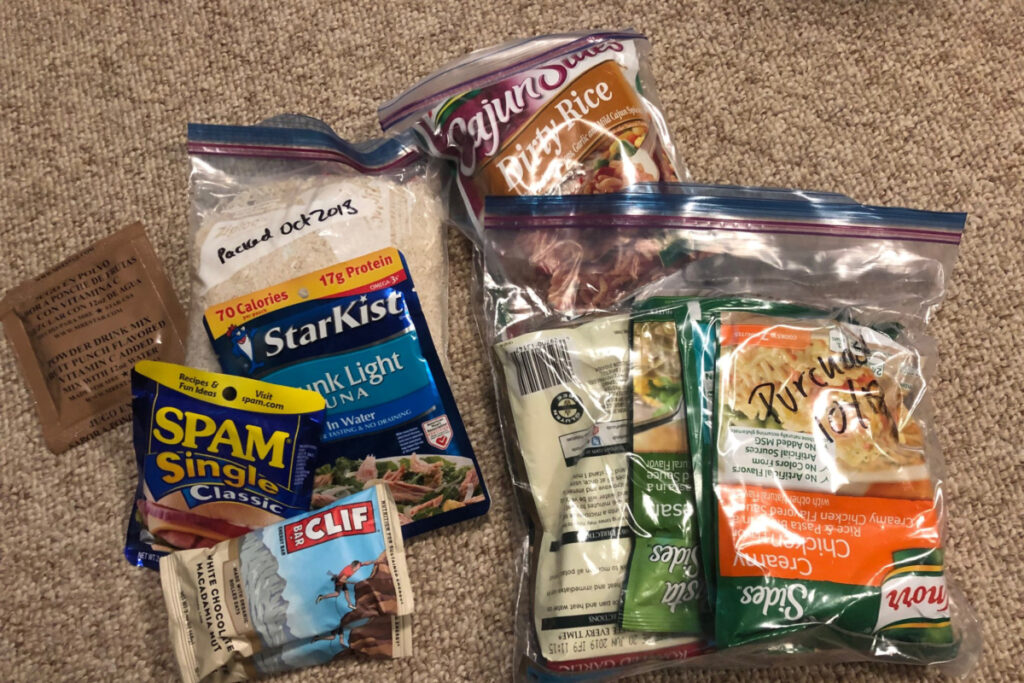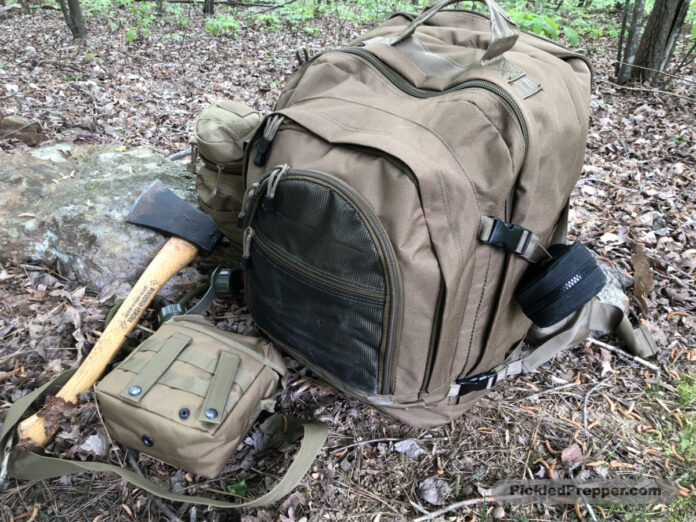A few days ago, I mentioned I opened an old bugout bag and found some cash and a gold coin. Since then, I have taken advantage of the cold weather and continued to organize and inventory our prepping supplies.
I recently opened my large bug out bag I put together in 2018 when we lived in our former home and in the event of disaster would have bugged out to a retreat about four to five hours away by car. Since then, we have moved to our new prepper property on the side of a very remote mountain and sold our retreat. I probably don’t need my bugout bag any longer because we intend to bug in, not out. About the only thing that might force us to leave would be a forest fire, although I think it is likely I would stay and fight it.
Backpack or Luggage
While this bugout bag is a backpack, I do not intend to carry through the woods and over hill and dale. It is far too heavy for that. Instead, it is luggage in the form of a backpack. I intended it to grab it and tossed into the back of the car or truck or carry into a hotel room or someone’s spare bedroom. Assuming we get to our retreat, it gets unloaded into the house.
If we could not reach our retreat for some unforeseen reason, the bugout bag should keep us fed, clothed and equipped for as long as a week wherever we end up. If we have no option but to hoof it, then we would strip down the pack and abandon many items in it. (By the way, when I say “we” or “us” I am including my wife, who has her own bugout bag, although it is much lighter than mine.)
My pack contains a pair of old but serviceable athletic shoes. If I am wearing dress shoes when forced to bug out, I could change into them. If I am wearing rugged footwear, abandoning the running shoes is no big deal. The bag also contains a loaded AR-15 magazine and two empties, 200 rounds of 5.56 ammo on stripper clips, 50 rounds of .40S&W, and 150 rounds of .22LR. If my wife has her .22, then she gets those rounds added to her bag. If I don’t have an AR-15 with me, then we abandon both the mags and spare ammo. All the MREs get stripped down, the cardboard boxes and other excess packaging left in the vehicle or buried along the way.
Priorities
Other considerations depend on the environment. If it isn’t cold, I can abandon some of the clothing. If we expect to reach the retreat in a few days, perhaps we can leave behind the pump water filter and carry just the survival straw and the water purification tablets.
Keep in mind that this is not a “survive the end of the world” bag that is supposed to help us stay in the wilderness forever. It is a “get from point A to Point B” bag. Our objective is not to live indefinitely on the contents of the bag, but to live long enough to walk to our retreat or a temporary place of refuge. My priorities in that scenario are food, water, shelter, and self-defense.
If we intend to walk for days and need to go pace while on foot, we need to get the pack down to 20 pounds or less. If we start a little heavier, we may eat our way down to that weight in just a couple of days. Those MRE entrees are eight ounces each, so one meal is a pound.
The poncho is my biggest priority for shelter, followed by an entire change of clothes, including four pairs of socks and a light jacket. Some of that can go, but the poncho is critical because it is my sleeping shelter. It will help keep me warm if necessary.

Food
Food makes up the biggest component of the bag. It contains:
- Two Snickers Bars
- A bag of Jolly ranchers hard candy
- Six Cliff Bars
- Two Power Bars
- Four MRE entrees
- For Mountain House pouches, each of which supposedly holds two servings
- Two slices of Spam in a foil pouch
- A foil pouch of tuna
- Two pouches flavored rice and three of pasta and sauce
- A pack of powdered potato flakes
- Four envelopes of maple-syrup flavored oatmeal
- A large bag of rice
- A GI mess kit
- Two sets of camping silverware
- A tin cup that can be used to boil water
I know my wife’s bag contains some of the Mountain House pouches and the Cliff bars as well.
My plan would be to eat breakfast, eat a food bar or Snickers during the day, and then eat a larger evening meal after stopping. Maybe we could find or gather food along the way or shoot some small game, but we certainly cannot count on it.
Other Supplies
For lighting and fire making, I have a small waterproof plastic tin of wooden matches, a lighter, and a ferro rod. I have 10 CR123 batteries, a headlamp, and a small handheld light that can work as a tent lantern. There were also a couple of tea lights inside.
For hygiene, I have a tightly rolled micro fiber towel, a small roll of toilet paper and a small bar of hotel soap. That’s not much.
Other tools I have include a phone charger, a morakniv, a large belt knife with a sharpening stone in the sheath, a compass, 100 feet of paracord, some bungees, a Rite-in-Rain notepad and pen, a repair kit and sewing kit, a first aid kit, and a small pull-through gun cleaning kit with a cable.
What’s Missing
When I look at this bag objectively, one thing missing is a means of communication. We have no radio and not even a signal mirror. There is small battery pack that could charge my phone once or twice, but no solar panel or devices. I know I own a foldable solar panel, but it is not in here.
There are also no snares or fishing equipment. No folding saw, string saw or hatchet, although I have a hatchet (as seen in the photo) and a folding saw in the truck. We also have no camp stove or fuel tablets.
After we consume the MREs, the food is very carb heavy. I should have more Spam or other meat, or even a baggie of dried beans to provide some protein.
The Biggest Challenge
As I have said prior, bugging out is low on my list. Even when we lived in the city, I would prefer to head to the retreat well before it is necessary to do so. Beating the rush to get out of town and the actual disaster by a day or two should make for a smooth trip and eliminate the need to use anything in my bugout bag. In that case, it just serves as a security blanket.
If I had bugged out, driven 200 miles and then circumstances forced us to walk the last 50 miles, my biggest challenge would be to decide what to leave behind and what to take. Between the contents of my bugout bag, the truck’s survival kit, and my Every Day Carry bag, I would have far more than we could carry unless we were riding a four-wheeler or could arrange some other back-up transportation. I guess it would depend on the situation, the weather, and the mood of the country. I’m hopeful this is a decision I will never need to face.
For those of you who may one day have to bug out, heed my advice and leave at the first hint of trouble. That said, I hope the contents of my bag give you some ideas.








